NEAR THE RAILROAD ON A WARM WINTER DAY
The temperature today, early in the morning, while I'm writing this post, is around 1 degree Celsius. It's a pretty cold morning by the standards of this area. Frost can be seen on the lawn behind my house, on the top of my car too, and all the cats spent the night indoors. But this isn't a theme of today's post. This chilly introduction is here only to set an interesting contrast with what you'll see in the following photographs.
Yes, today's temperature is pretty low, but not so long ago, on the 4th of January, I spent a couple of morning hours in an unusually warm atmosphere.
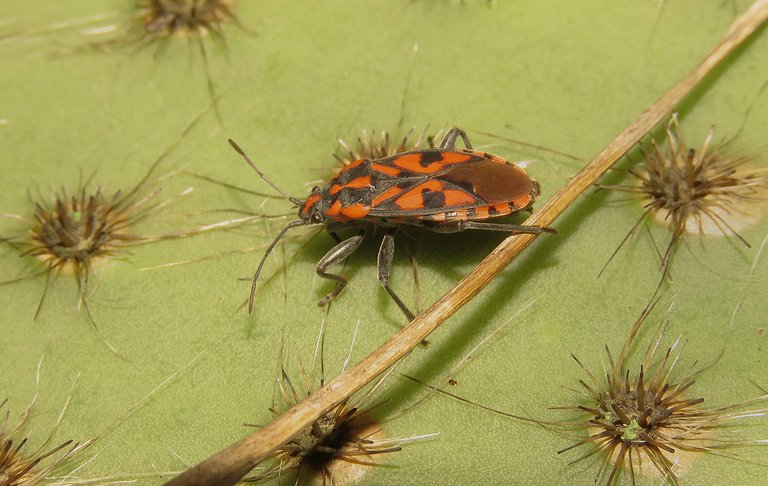
I even found one insect. And it was a colorful one too.
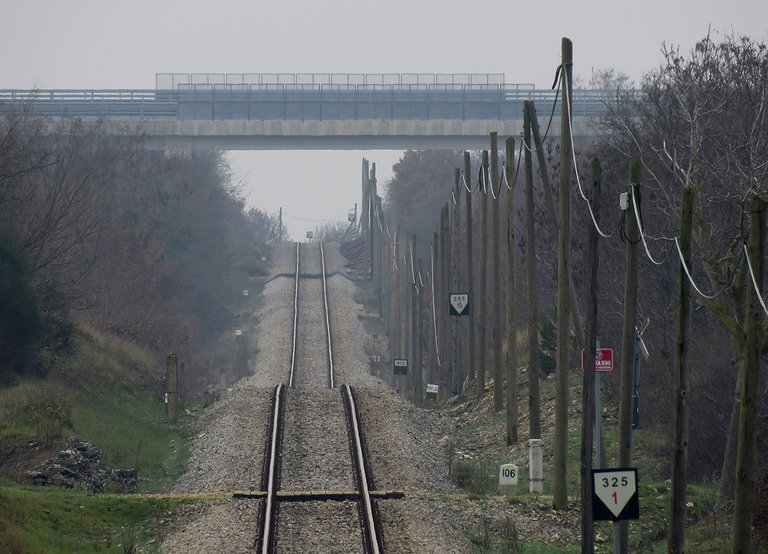
I drove about thirty kilometers north of my hometown and stopped just outside the small village of Saint Kirin.
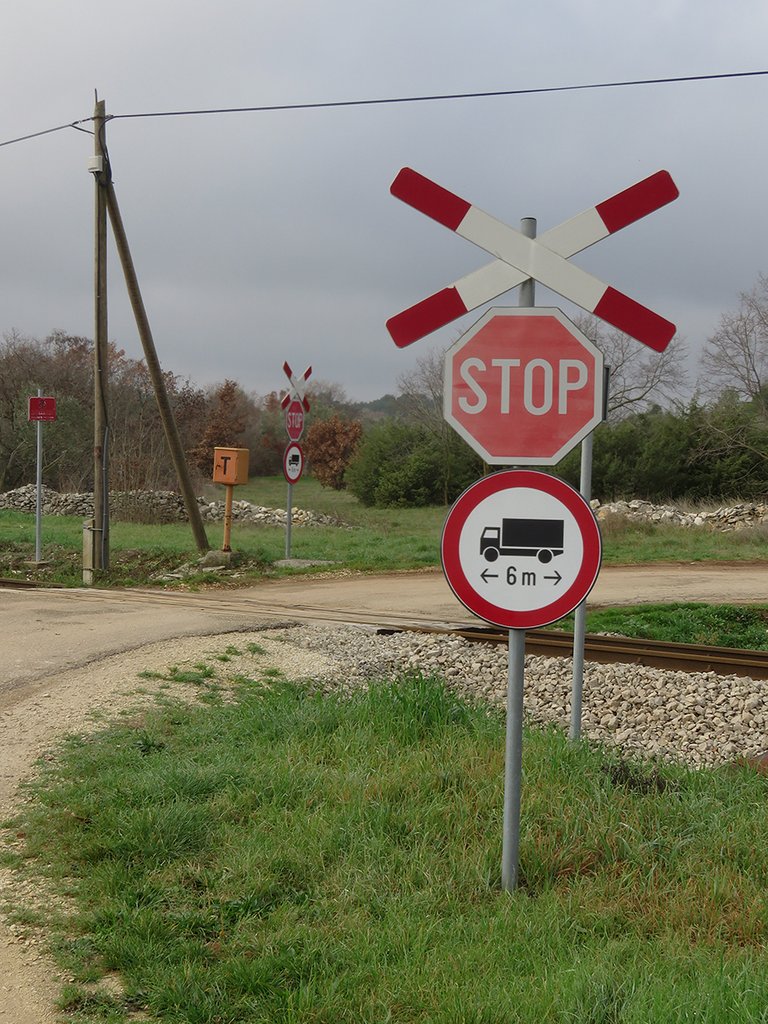
I passed this small level crossing and parked the car near the drystone wall shown in the background of the picture.
Here you can see the lovely pattern ...
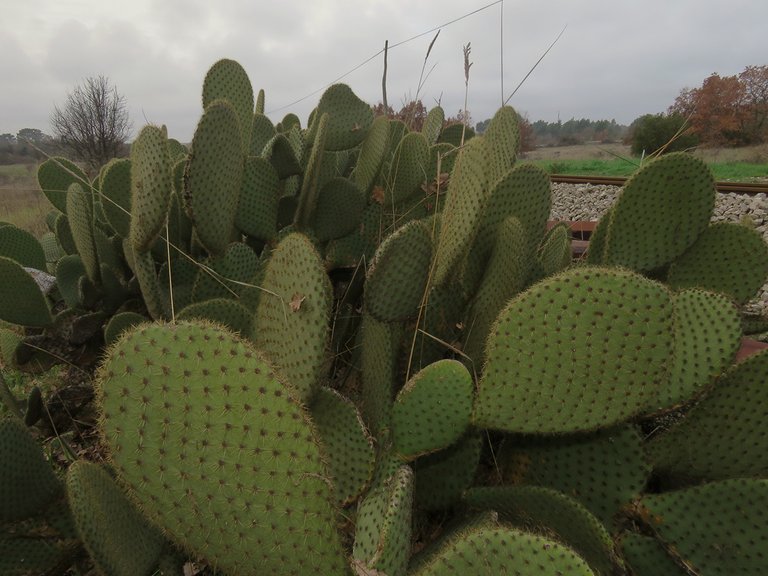
... found on one of the many succulent stem segments of a cactus ...

... that grew fifty - sixty meters further along the railroad.
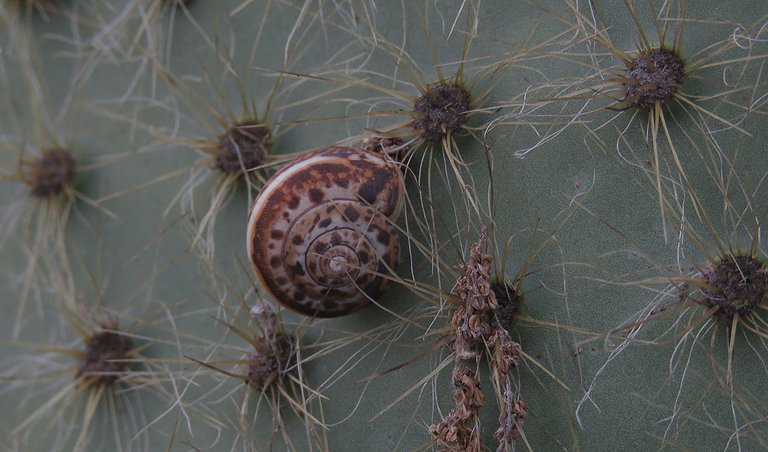
I photographed some very cool stuff on that plant ...
... including the colorful insect introduced earlier. This is the Spilostethus saxatilis, a bug from the Lygaeidae family. I didn't have the macro lens with me because I didn't expect insects in January, so I wasn't able to take a real macro portrait of the bug. The small snail shown in the previous photograph is Theba pisana. In this species from the Helicidae family, the shell color can vary from white to yellow-brown with a nice variety of spiral markings in various shades of brown.
Here you can see a fallen leaf caught by the tiny, hair-like spines of the Opuntia ficus-indica cactus.
The leaf fell from the nearby oak tree.
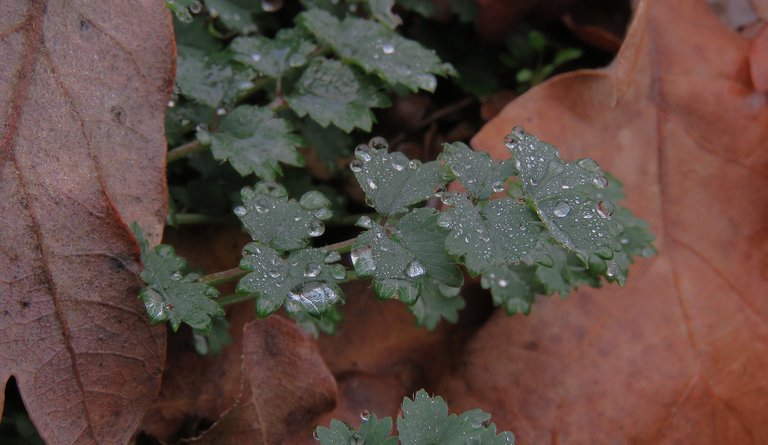
Here you can see the green leaves of the Sanguisorba minor plant that grew under the tree, surrounded by brown foliage that covers the ground. The Sanguisorba minor leaves were decorated with dew ...
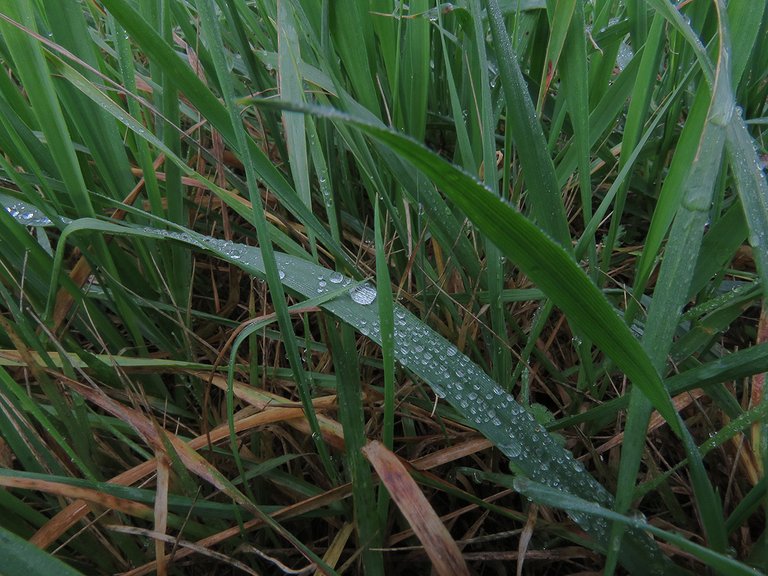
... and so was this grass photographed twenty - thirty meters from the tree.
Here you can see the friend who was there with me walking towards the small house near the railroad. In the following photograph ...
... I zoomed in on the magpie that was resting on the wire, slightly above the rooftop. Across the road from that house ...
... there is a vineyard surrounded by meadows. As you can see in this photograph, I found a relatively big mushroom among the herbaceous plants on the edge of that vineyard.
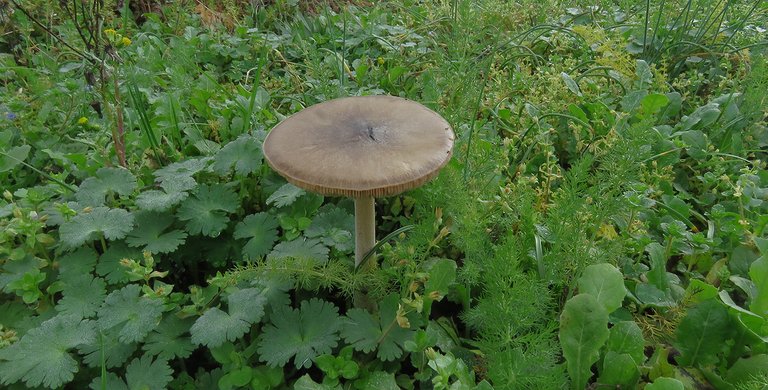
This is the Volvopluteus gloiocephalus, a mushroom from the Pluteaceae family.
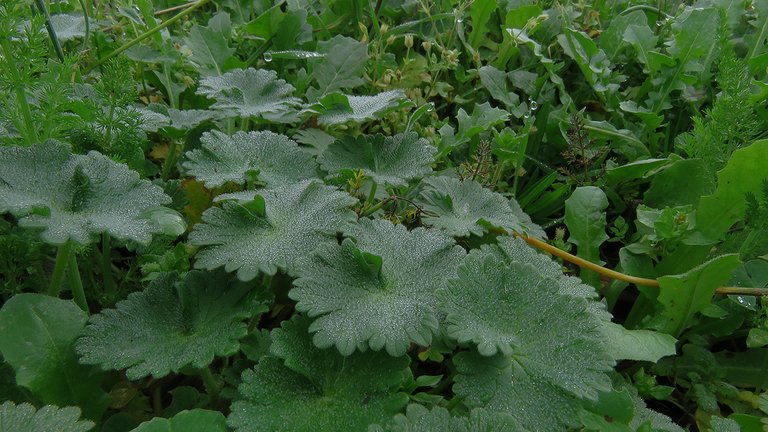
Here you can take a better look at the mix of plants around the mushroom. Prominent in the foreground is the Geranium molle with round leaves that have lovely crenate margins and are also decorated with tiny droplets. I took the following photograph ...
... while walking back to the cactus.
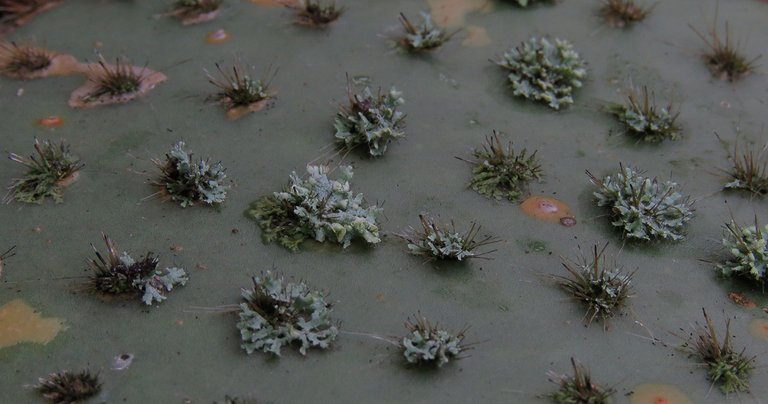
Here you can see the most interesting thing I found on that plant. A detail that was completely new to me.
Some cladodes, the modified segments of the stem that function more or less like leaves in more usual plants, in the lower parts of the cactus were sparsely covered with lichens.
The lichens grew on the areoles, the small bumps covered with clusters of spines ...
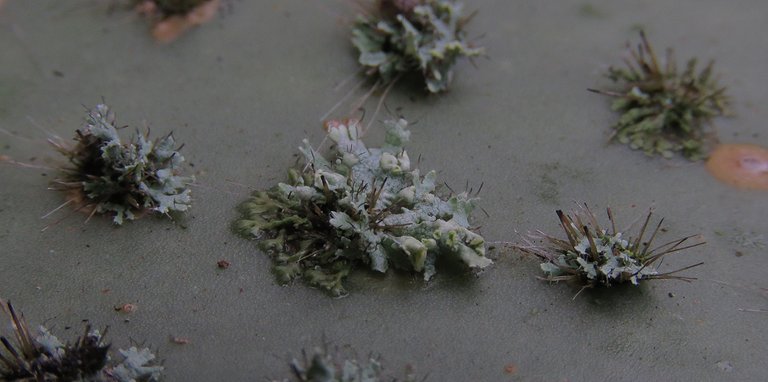
... and that combination of hair-like spines and the lichen looked fantastic to me. The fact that I have never noticed this thing before certainly contributed to the excitement.
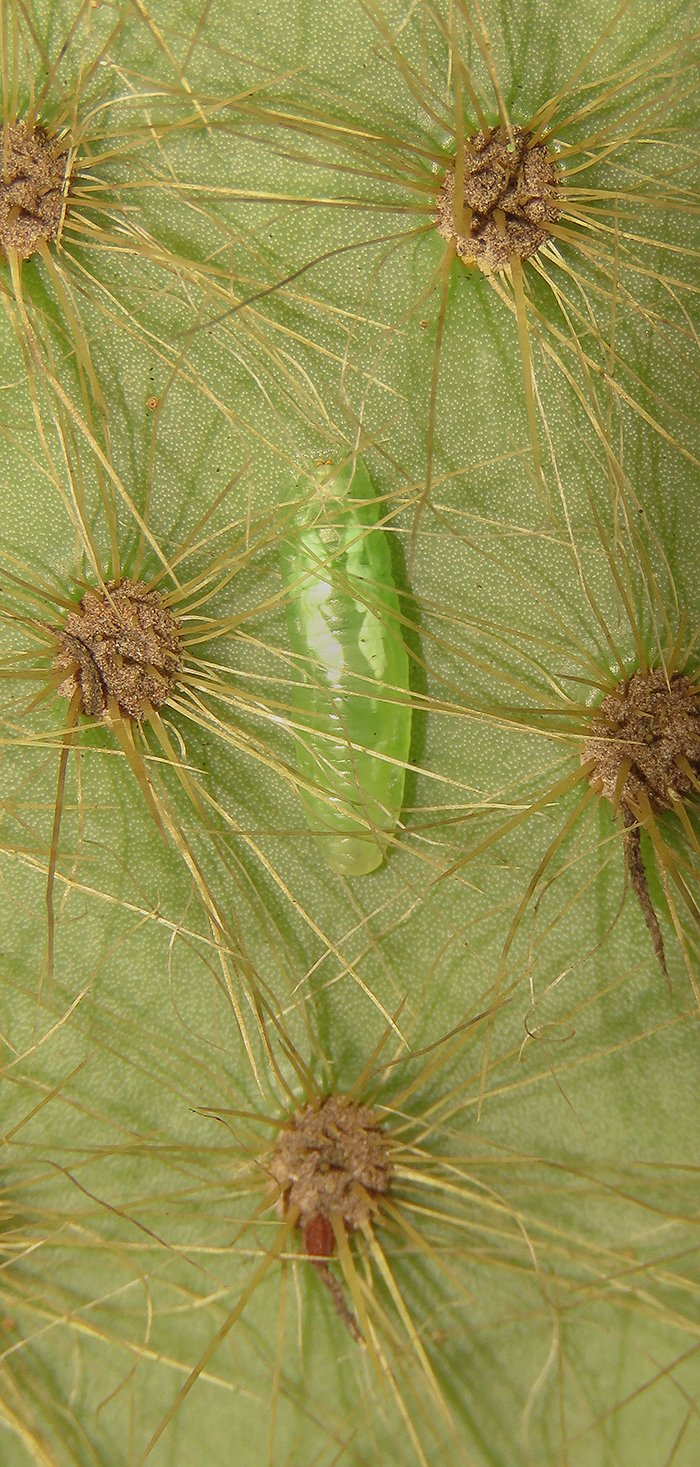
The little green thing shown in this photograph, camouflaged on the green surface of the cladode and protected by the spines above it, is a larva of some fly species from the Syrphidae family.
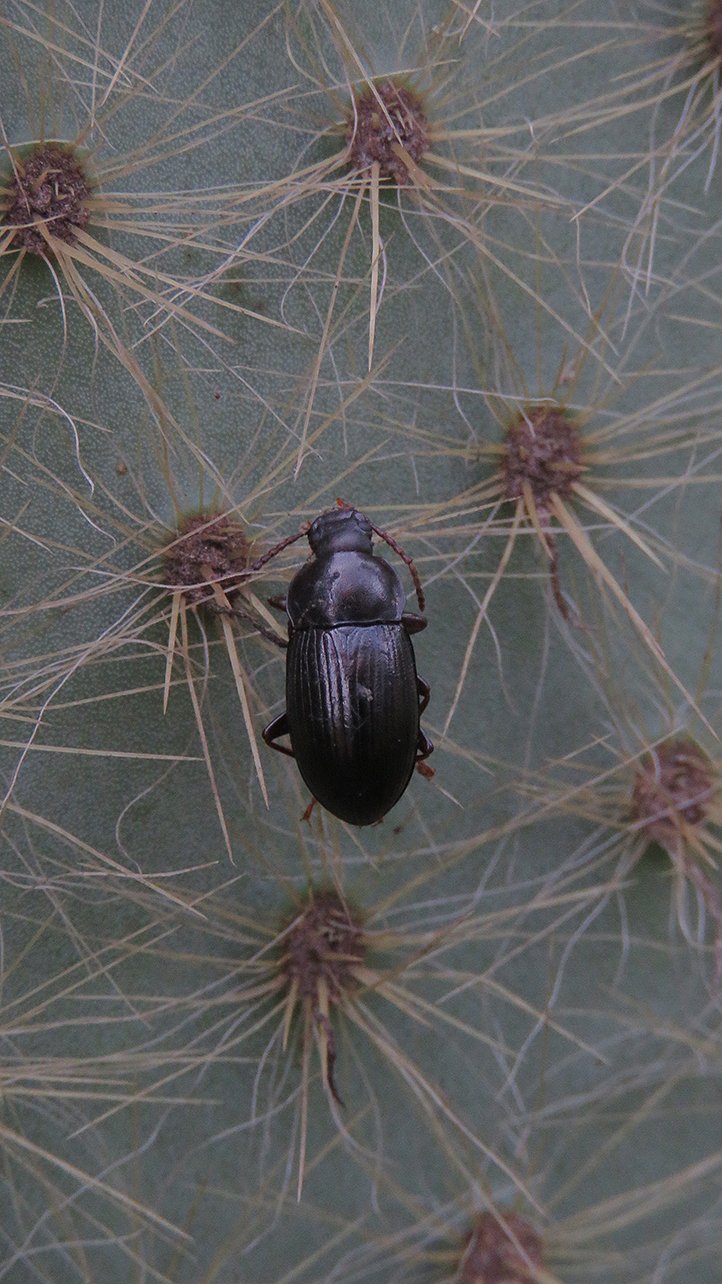
On another cladode, I found this dead beetle. Can't tell you the name of the species, but the family is definitively Carabidae.
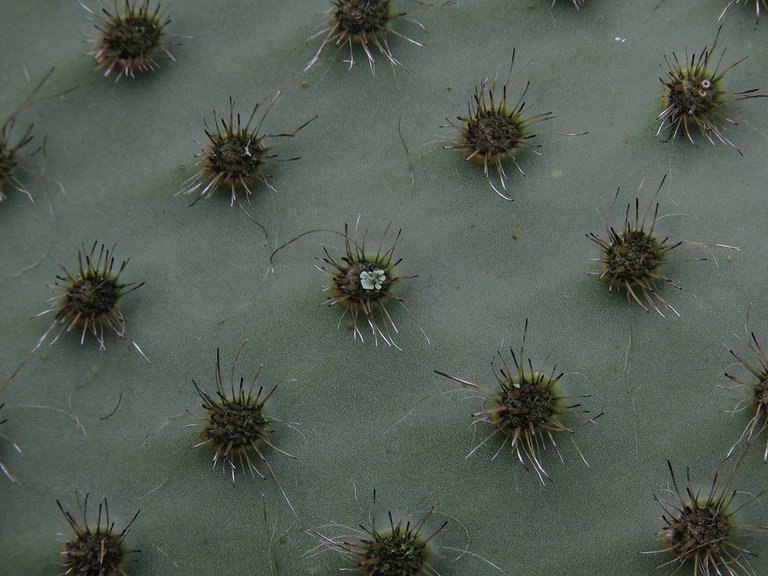
Here you can see a pattern with one cute little anomaly in the center of the picture.
A macro lens would have been ideal for this motif, but if you enlarge this photograph by clicking on it, you may still be able to take a good look at the main protagonist of the picture - the tiny lichen surrounded by spines.
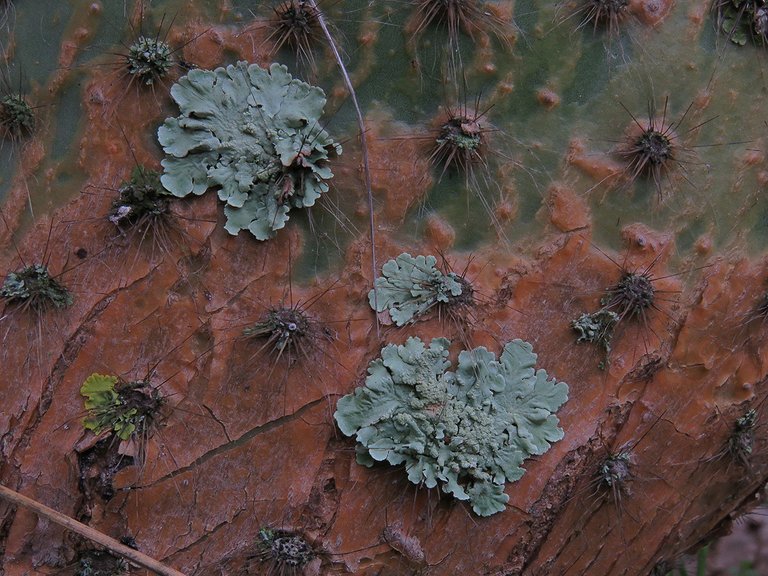
These fairly large lichens were photographed on the decaying cladode at the base of the cactus.
I have just two more things to say before I leave the cactus. Number one: Like all cacti, Opuntia ficus-indica is native to the Americas, and was introduced in Europe in the 16th century.
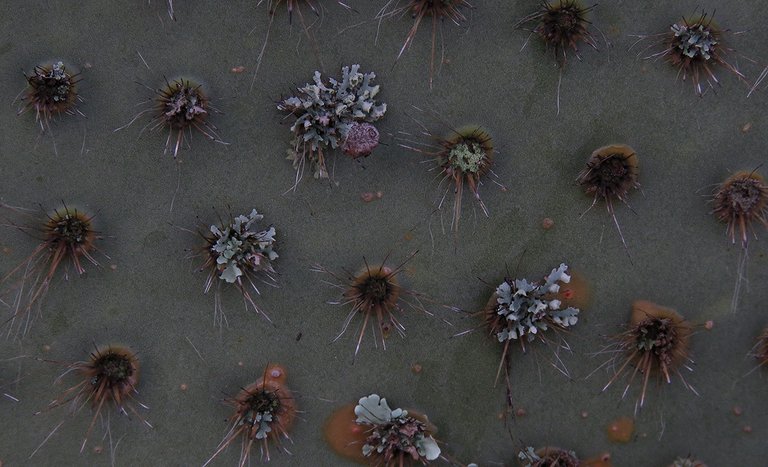
Number two: The annoying hair-like spines are called glochids.
Here you can see another mushroom found on the edge of the vineyard.
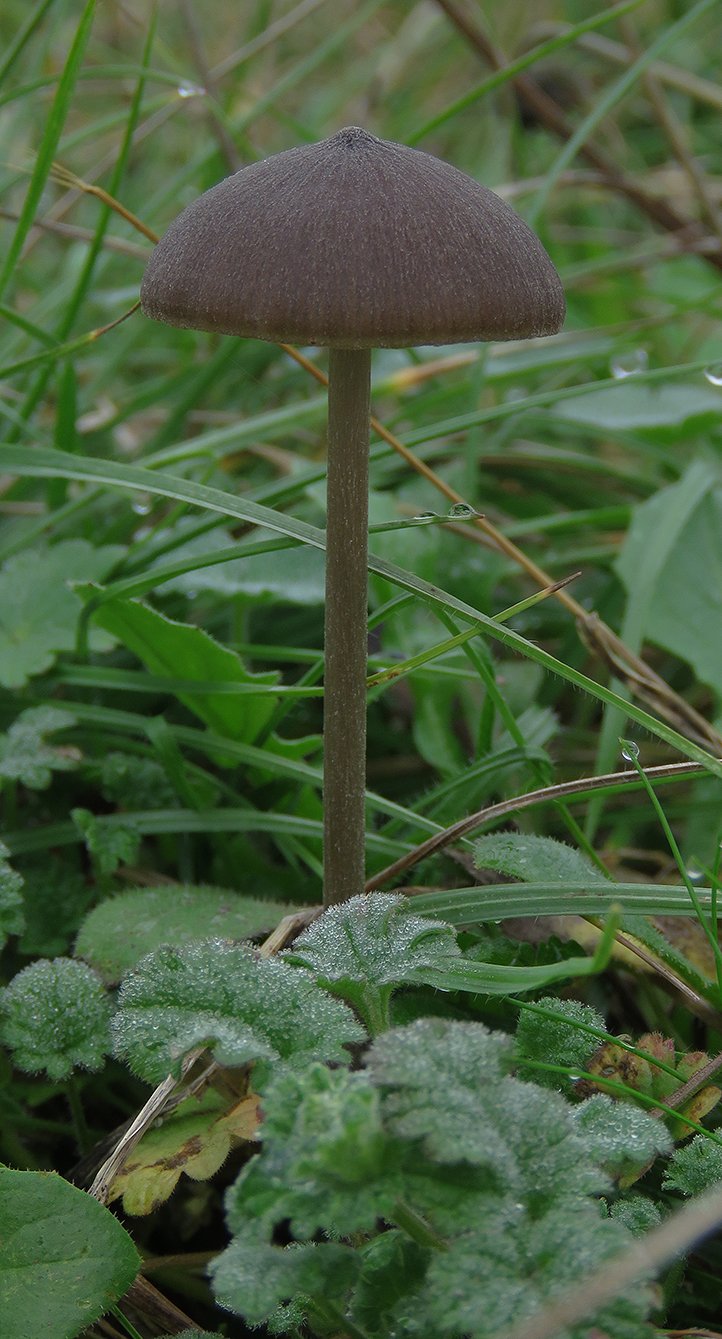
In this case, I can't tell you the name of the species.
The family is probably Entolomataceae. If you take a good look at the details of this enlargeable picture, you'll see that I have found more than one mushroom of this type.
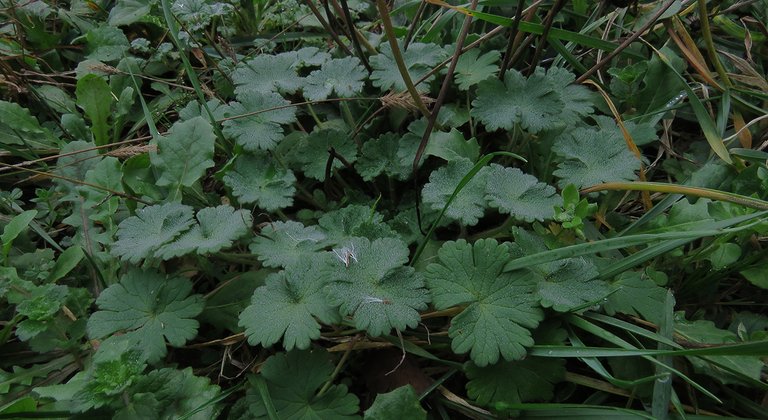
Here you can see the leaves of the Geranium molle again.
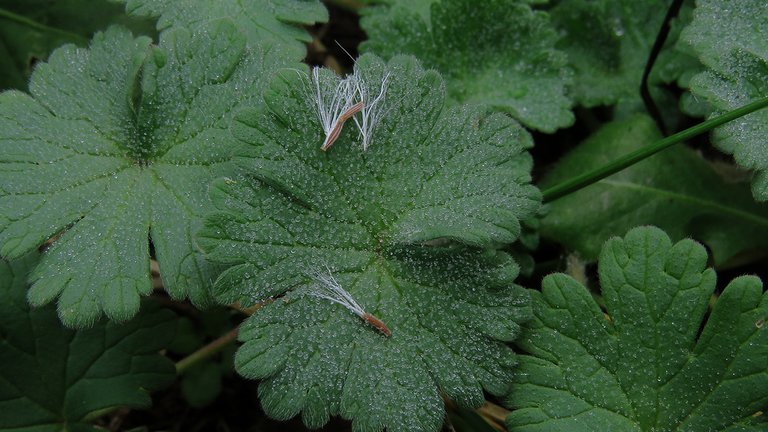
You can also see the seeds fallen from the top of some other herbaceous plant on one of those leaves.
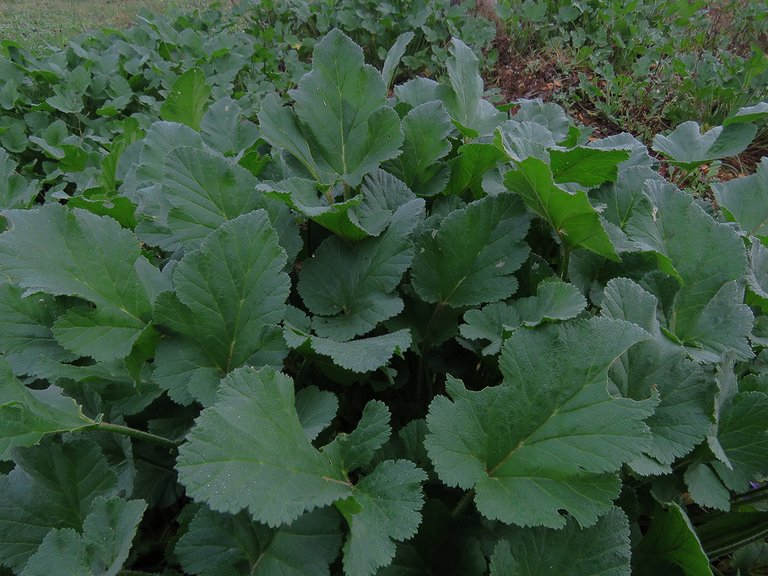
These leaves belong to another plant from the Geraniaceae family. The Erodium malacoides.
And that's it. I said more or less everything I planned to say. Furthermore, is time for me to drive to the city and do some stuff there. I'm getting late. This journey ends here. Hope you enjoyed it as I did it seven days ago.
AS ALWAYS HERE ON HIVE, THE PHOTOGRAPHS ARE MY WORK.
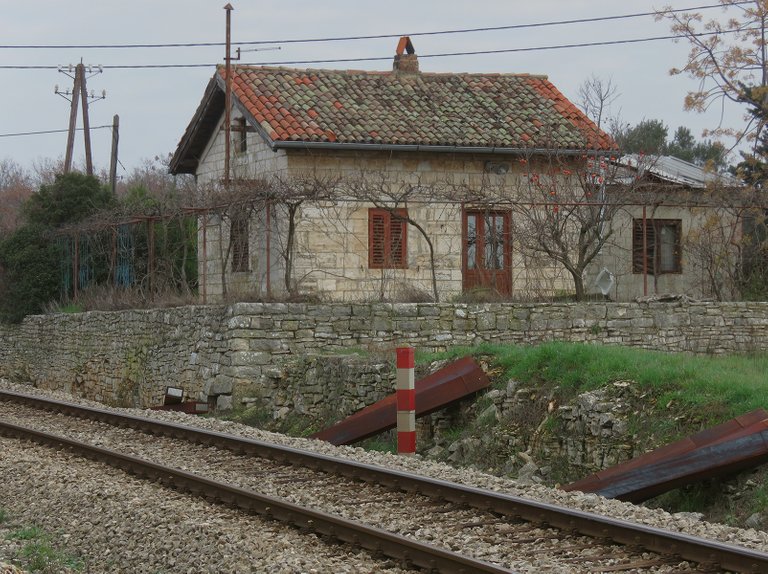
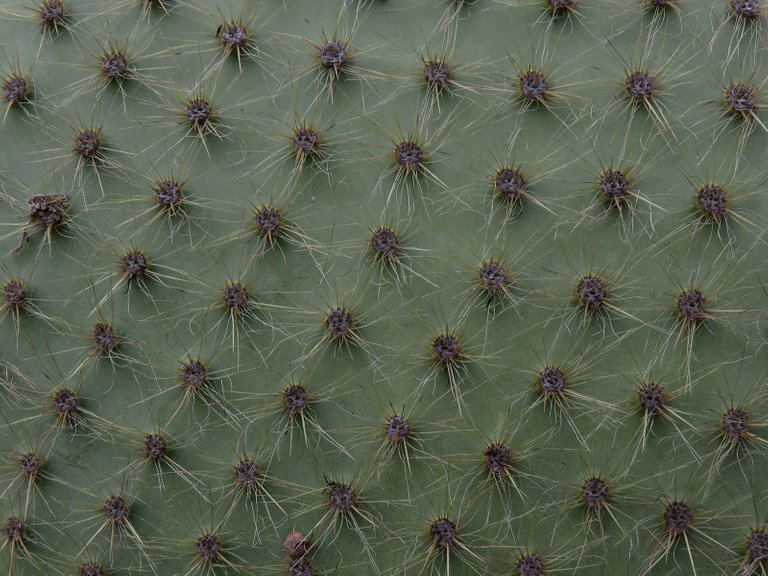
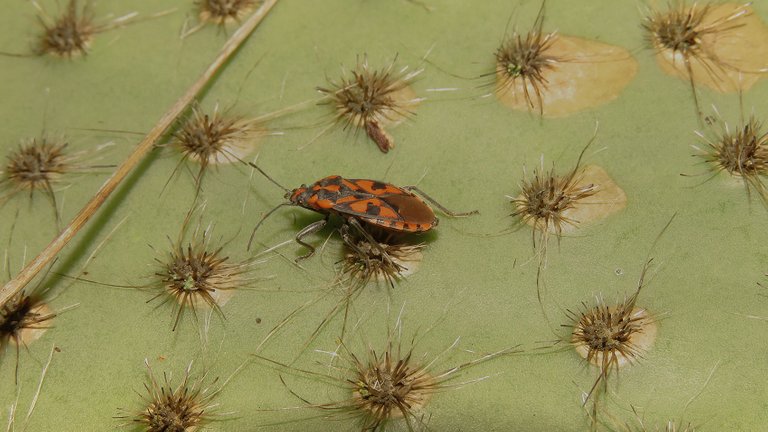
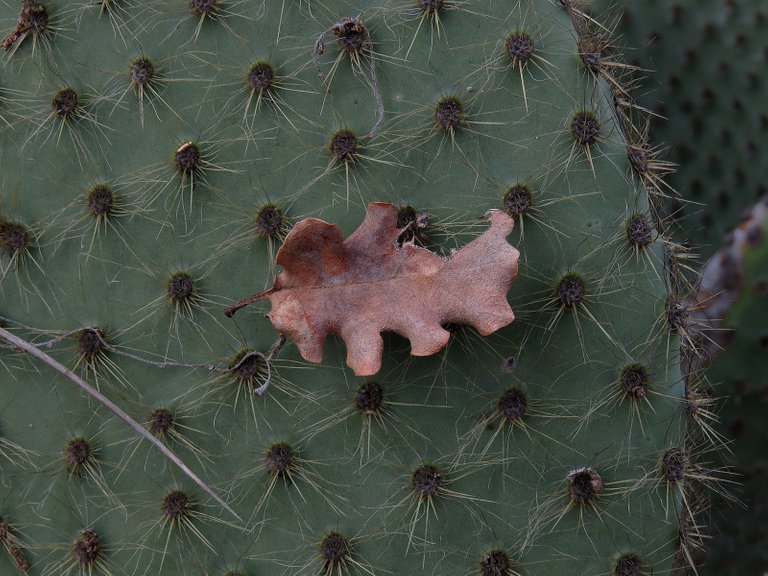
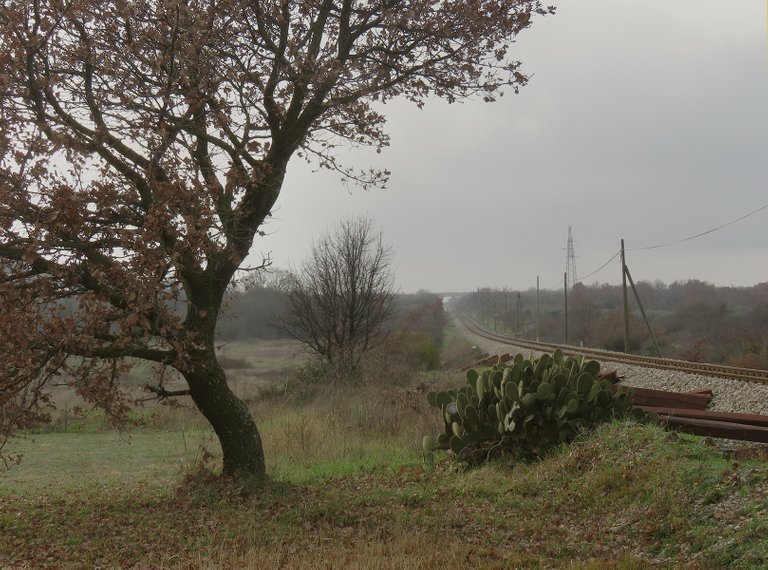
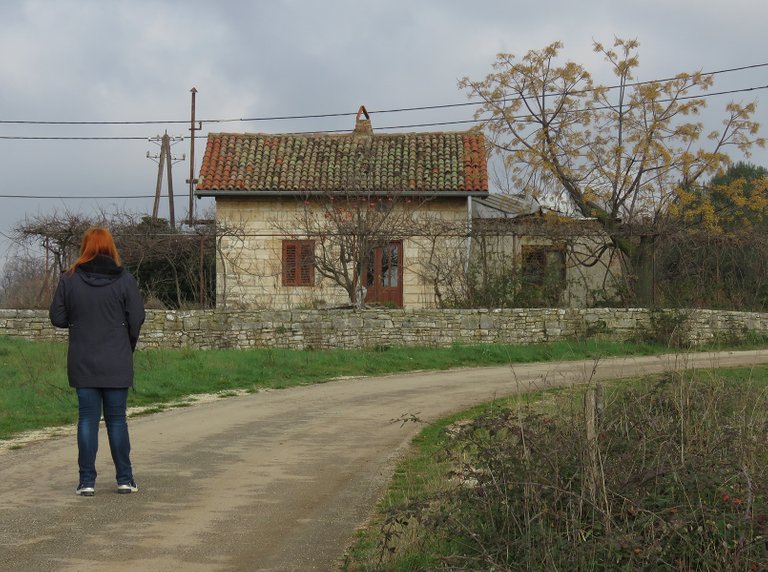
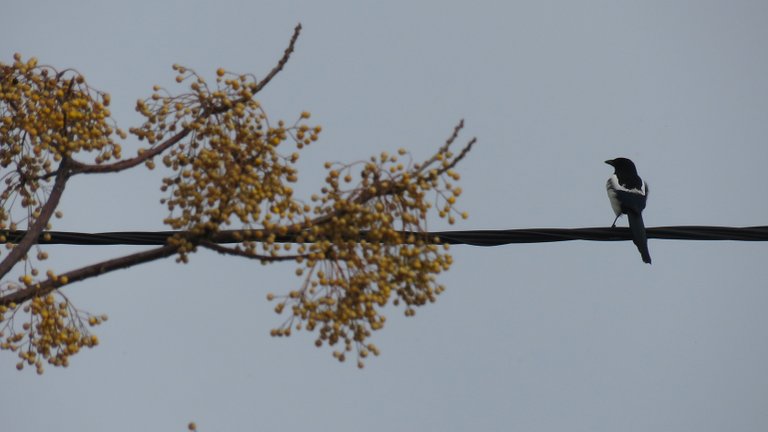
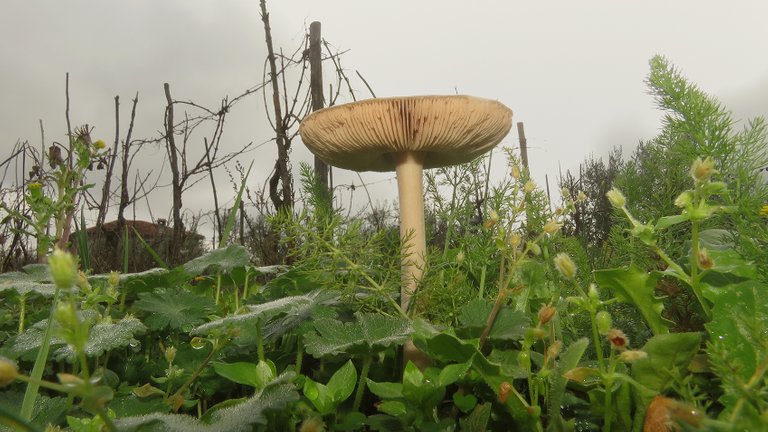
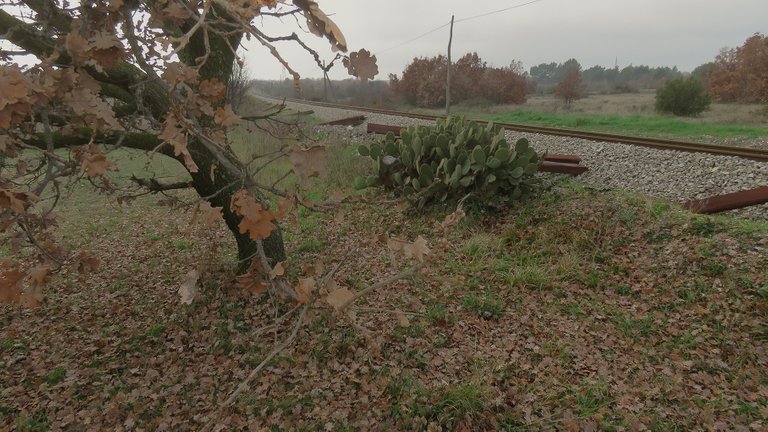
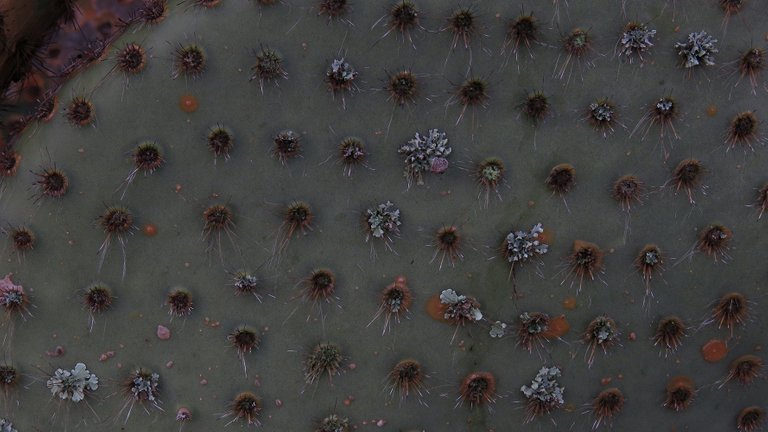
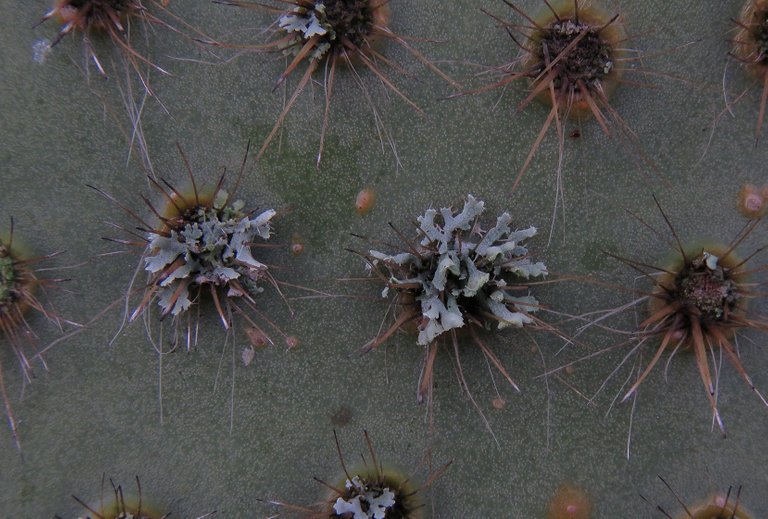
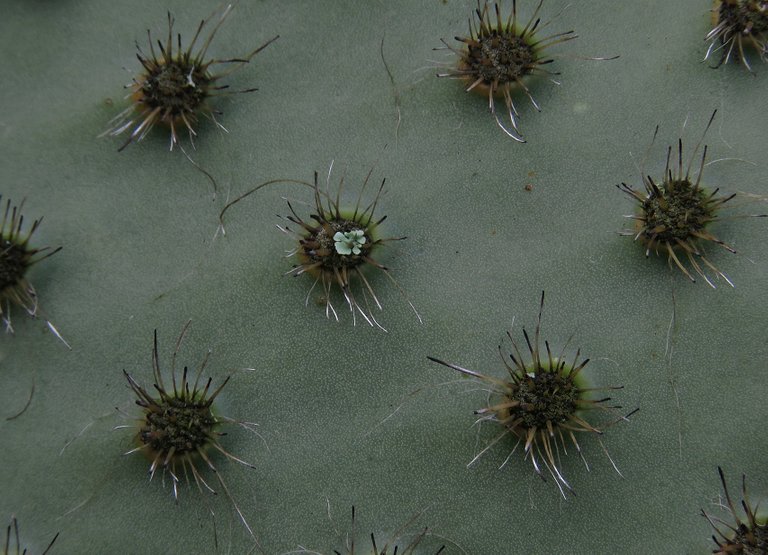
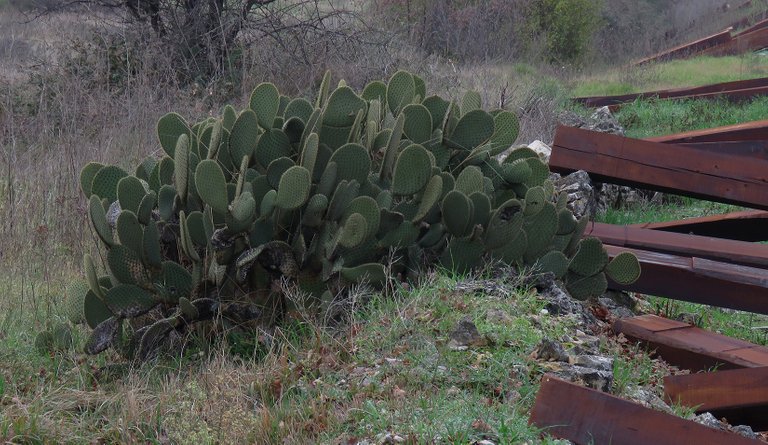
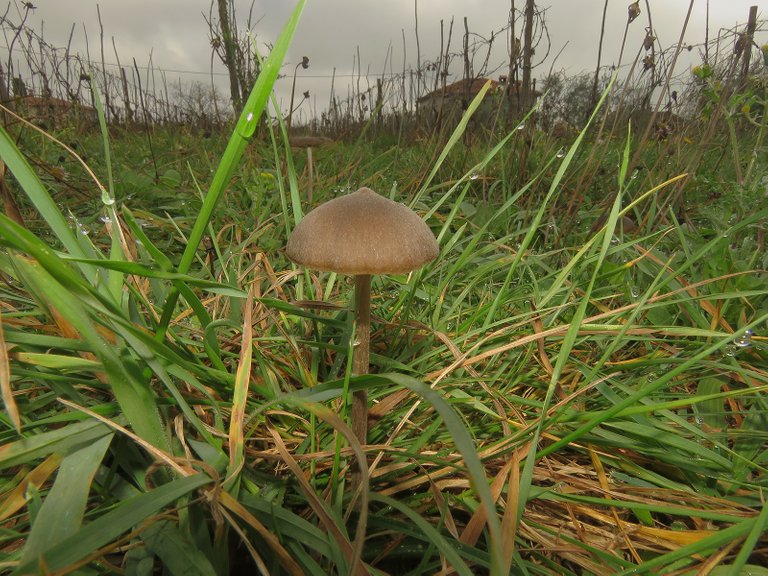
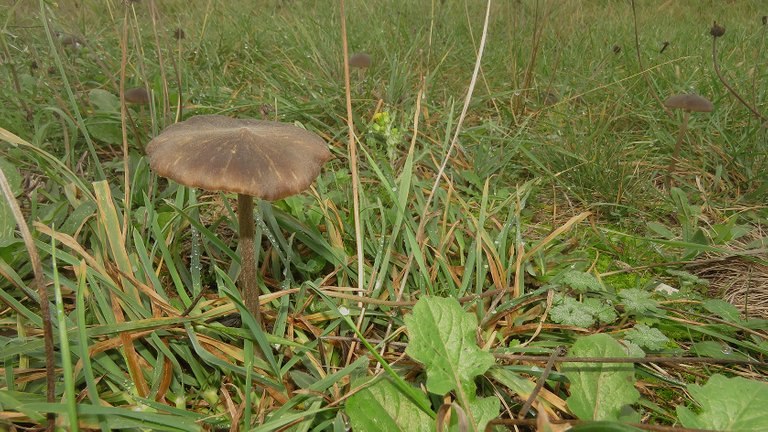
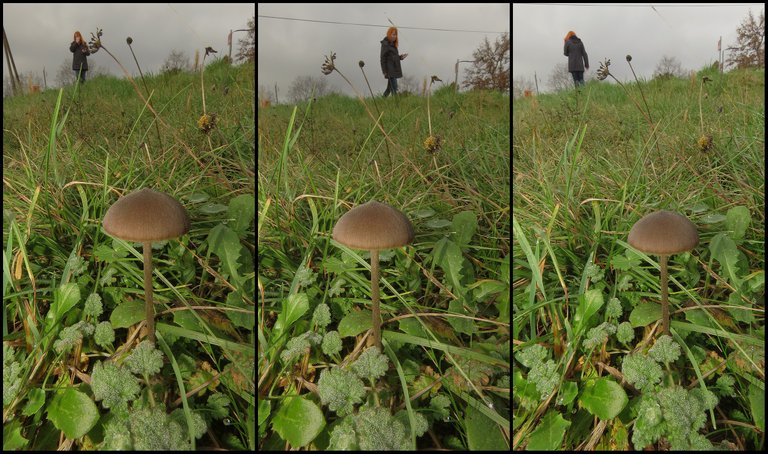

Great puctures bro...
I especially love the lichen patterns😗❤️
https://twitter.com/1475819111271870469/status/1613479341991542784
The rewards earned on this comment will go directly to the people( @ladytitan ) sharing the post on Twitter as long as they are registered with @poshtoken. Sign up at https://hiveposh.com.
A thorough exploration of the area indeed.
Cacti with spikes covered in lichen, speaks about the climate a lot.
Mushrooms bigger than houses! :P Nicely done :)
I clearly remember from my childhood the smell of the impregnated railroad sleepers...
!PIZZA
I gifted $PIZZA slices here:
lightcaptured tipped borjan (x1)
@soulsdetour(1/5) tipped @borjan (x1)
Please vote for pizza.witness!
you relly brought a different perspective on the cactus.I thought that no other life can live on their thorny leaves, but apparently, a lot is going on to them. : )
the railway in the third photo is awesome.
Congratulations, your post has been upvoted by @dsc-r2cornell, which is the curating account for @R2cornell's Discord Community.
Oh! Opuntia - my favorite cactus! 😊 I last saw it in Greece this summer, and I should note that it goes without saying that all countries where it grows freely automatically fall into the "favorite country" category (my country is not there 😃 - too cold there). Thanks for this reminder of summer, even though it's winter and you're talking about cold temperatures. This plant for me is a symbol of the warm climate.
!LUV
!PIZZA
@borjan, @soulsdetour(1/4) sent you LUV. | tools | discord | community | HiveWiki | NFT | <>< daily
NFT | <>< daily
🙂
What lens do you use for your macro? those are always impresive!
I usually use the Raynox DCR-250 Super Macro Snap-On Lens for macro. But not this time. This time I left it at home, so I photographed small stuff with my Canon PowerShot SX60 HS with no additional help from the macro equipment.
So lovely. A lot of cactus and fungi. The railroad looks interesting.
Is this the "Pijana pruga" railroad or another one? It looks pretty damn cool.
It's another, more sober railroad. 😆 But Pijana pruga isn't far away.
the railway in third picture is good lines composition, the insect in 2nd photo look great.
The pattern in cactus make me stare it for a while and thinking good pattern, what is this? until i realized that was close up photo for cactus 😃
🙂
Sounds intriguing
Actually we live quite close to a railway track in England. Late evening when the roads are quiet we can hear trains, but not enough to bother us though. Train noise is something that you can get used to over time I think !LOL
lolztoken.com
He had skeletons in his closet.
Credit: marshmellowman
@borjan, I sent you an $LOLZ on behalf of @fun.farms
Farm LOLZ tokens when you Delegate Hive or Hive Tokens.
Click to delegate: 10 - 20 - 50 - 100 HP
(4/6)